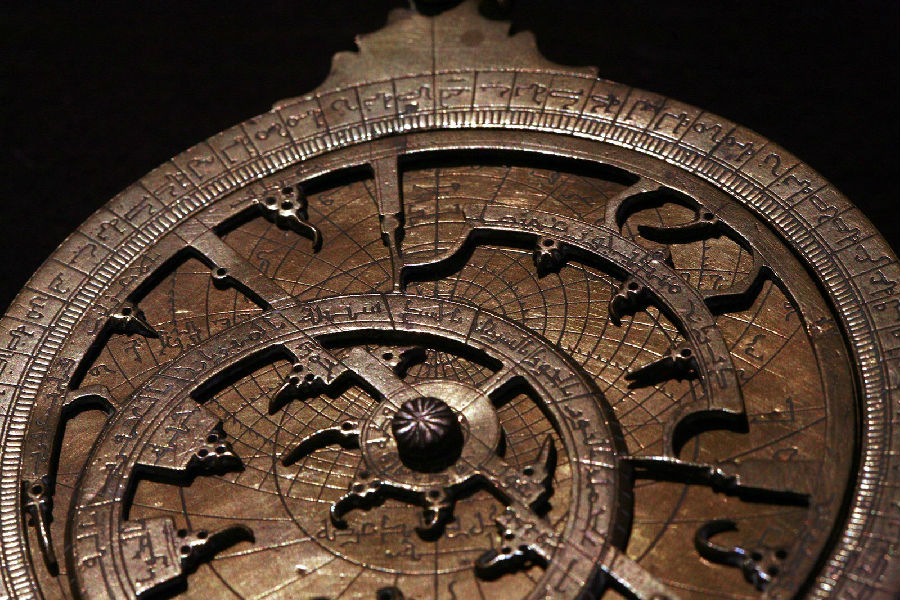Mr Falk acknowledges that medieval science was not the same as the modern kind. Astronomy was the most important discipline, but astrology was respectable too, and it shaded into magic. Monks and nuns toiled in scriptoria to understand “a living cosmos endowed by God”, not “a coldly mechanistic natural world”. But were the methods really so different? Confronted with the unknown, human beings generate a chaotic mass of hypotheses that gradually gets whittled down through observation and experiment. That describes medieval science as much as today’s.
福克承認,中世紀的科學與現代科學不一樣。天文學是最重要的學科,但占星術也同樣受人推崇,它漸漸演變成了魔法。修士和修女們在抄寫間中不辭辛勞地去理解“上帝賦予的存在生命的宇宙”,而不是“冰冷機械的自然世界”。但是研究方法真的不同嗎?面對未知,人類會提出大量不合理的假設,再通過觀察和實驗逐漸剝繭抽絲得出結論。中世紀科學與當今科學存在很多的一致性。
And medieval scientists had a virtue that their modern counterparts can seem to have lost: humility. That is the reason Mr Falk chooses an obscure 14th-century monk-scientist, John Westwyk, as his guide. He cites Westwyk’s description of the astrolabe, an instrument that assisted in many useful tasks, such as telling the time and finding north, based on calculations of the positions of celestial bodies. The astrolabe sometimes seems to have more personality than the monk, probably because of the paucity of biographical information available. Still, Westwyk plays a valuable role in Mr Falk’s story.
中世紀的科學家擁有一種現代科學家似乎已經失去的美德:謙卑。這就是福克選擇14世紀一位默默無聞的修士科學家約翰·韋斯特維克作為引導的原因。他引用了韋斯特威克對星盤的描述。星盤是一種可以幫助完成多種有用任務的儀器,例如根據天體的位置計算出時間和尋找北面的方向。星盤有時似乎比這個修士更有個性,但也可能是因為關于修士的傳記資料匱乏。盡管如此,韋斯特威克在福克的故事中還是起到了重要作用。

To become an astronomer, he had to learn mind-boggling quantities of information, often in the form of numerical tables for which the astrolabe provided a handy, but less accurate, shorthand. Reading about what Westwyk knew can be hardgoing, because people are not used to thinking that way any more; computers do it for them. The reward is an understanding of the daily feats of memory that he and his contemporaries performed. It was because their knowledge was derived from first principles, Mr Falk shows, that they regarded the night sky with such wonder.
為了成為一名天文學家,韋斯特威克必須學習大量信息,內容多到難以想象,這些信息通常是以數值的形式出現,星盤為此提供了方便但不太準確的速記方法。閱讀韋斯特威克的知識體系的過程十分艱難,因為人們已經不習慣于以那樣的方式進行思考,電腦取而代之。讀懂這些東西的好處在于我們能夠理解韋斯特威克和他同時代人們日常的驚人記憶力。福克表示,正是因為他們的知識來源于基本原理,所以他們對夜空充滿了好奇。
The mechanical clock, spectacles, advances in navigation, a grasp of tides and currents—these were among the achievements of the Middle Ages. They produced a theory of impetus that influenced Galileo Galilei in the 17th century. By then Nicolaus Copernicus had overturned everything medieval astronomers held dear, by placing the sun at the centre of the universe; but he couldn’t have done so without their patiently elaborated geometry. Fittingly, a metaphor Isaac Newton used in 1675—“If I have seen further it is by standing on the shoulders of giants”—was coined in a 12th-century cathedral school.
機械鐘、眼鏡、航海技術的進步、對潮汐和水流的掌握,都是中世紀的成就。中世紀提出的動力理論對17世紀的伽利略產生了影響。到那時,尼古拉斯·哥白尼通過日心說,推翻了中世紀天文學家所珍視的一切;但如果沒有中世紀耐心細致的幾何學,他是不可能做到這一點的。艾薩克·牛頓在1675年使用的一個比喻很恰當,“如果說我比別人看得更遠些,那是因為我站在了巨人的肩上”,這個比喻是在12世紀的一所大教堂學校里創造的。
譯文由可可原創,僅供學習交流使用,未經許可請勿轉載。












